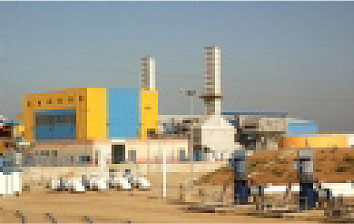In common with other countries in this water-scarce region, Israel has chronic problems over water resources - which the Desalination Master Plan, launched in 2000, set out to address.
This called for the construction of a series of plants along the Mediterranean coast, to enable an annual total of 400 million mę° of desalinated water to be produced by 2005, chiefly for urban consumption. According to the plan, production is intended to rise to 750 million by 2020.
The Ashkelon seawater reverse osmosis (SWRO) plant - the largest in the world - achieved two notable successes in 2006. In March it was voted 'Desalination Plant of the Year' in the Global Water Awards, subsequently passing a major project milestone in October 2006, when, little more than a year after it commenced initial production, it successfully delivered its first 100 million m3 of water.
With a capacity of 320,000m3 per day, the plant produces around 13% of the country's domestic consumer demand - equivalent to 5-6% of Israel's total water needs - at one of the world's lowest ever prices for desalinated water.
Separating the high-pressure pump from the energy recovery device and breaking the link between pump capacity and the RO bank capacity enables the process to be optimized for each of the constituent elements. This brings significant technological flexibility and high efficiency to the system while also reducing overall water cost - in this case to $0.52/m3.
An energy recovery center made up of 40 double work exchanger energy recovery (DWEER) devices, collects pressurized brine from each plant's RO banks and reclaims the energy. The independent nature of this system increases both the flexibility of the system and its overall efficiency.
The whole facility occupies 75,000m2 of industrial site, some 700m north of an existing Israel Electrical Company power station. Using the power station's cooling seawater discharge was one of a number of intake options initially considered, but was ultimately rejected in favor of using an open, submerged type, principally due to site constraints and hydrogeological limitations.
The system comprises three parallel pipes, which safeguard supply and enhance operational reliability by producing non-turbulent feed water flows. High-density plastic piping - simple to clean and relatively resistant to biological growth - has been used to minimize maintenance.
From the pumping station, raw seawater flows to the pre-treatment facilities through two separate lines. This ensures that the plant can at least continue to operate at half-capacity in the event of blockage or failure in one of the pipelines or static mixers. The dosing pumps at the chemical treatment facility are each equipped with real-time flow-rate adjustment and adequate redundant capacity has again been factored in to guard against downtime.
Filtration is performed in two stages, starting with gravity filters containing gravel, quartz sand and anthracite media. The combination of long residence time and a distribution system designed to minimize clogging and preferential channel formation contribute to achieving high filtration efficiency.
The filters, which have an automatic backwash facility, offer a 33% standby overcapacity and have a proven ability to cope with storm turbidity levels. Two parallel batteries of cartridge filters form the second stage, with a built-in spare capacity of 40%.
High boron ion reduction was an important design consideration. The method selected is highly flexible and readily adjustable to feed water temperature fluctuations, being capable of delivering a removal efficiency of more than 92%, when necessary.
These demands, coupled with a number of other key requirements, including high pH tolerance, continuous low pressure operation, low membrane fouling and cost-effective, reliable performance, led to FilmTec elements being selected for the RO operation.
Post treatment with lime adds minerals to the product water, before it enters the national water system.
The Israeli Ministries of National Infrastructure and Finance, on behalf of the Government of Israel, formally awarded the contract. VID, the special-purpose JVC, comprises IDE Technologies (50% and lead partner), Veolia - Vivendi Water (25%) and Dankner-Ellern Infrastructure (25%).
